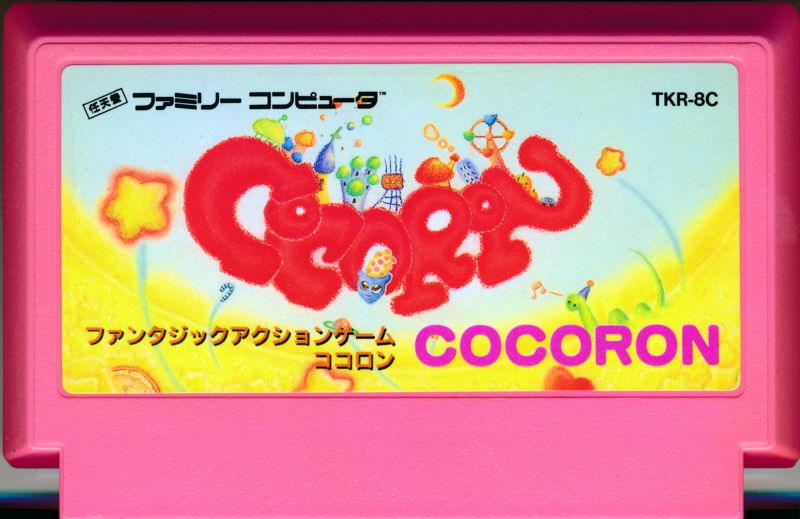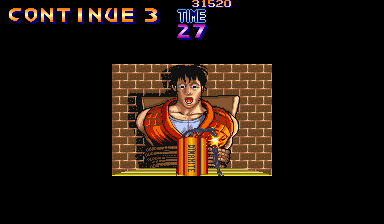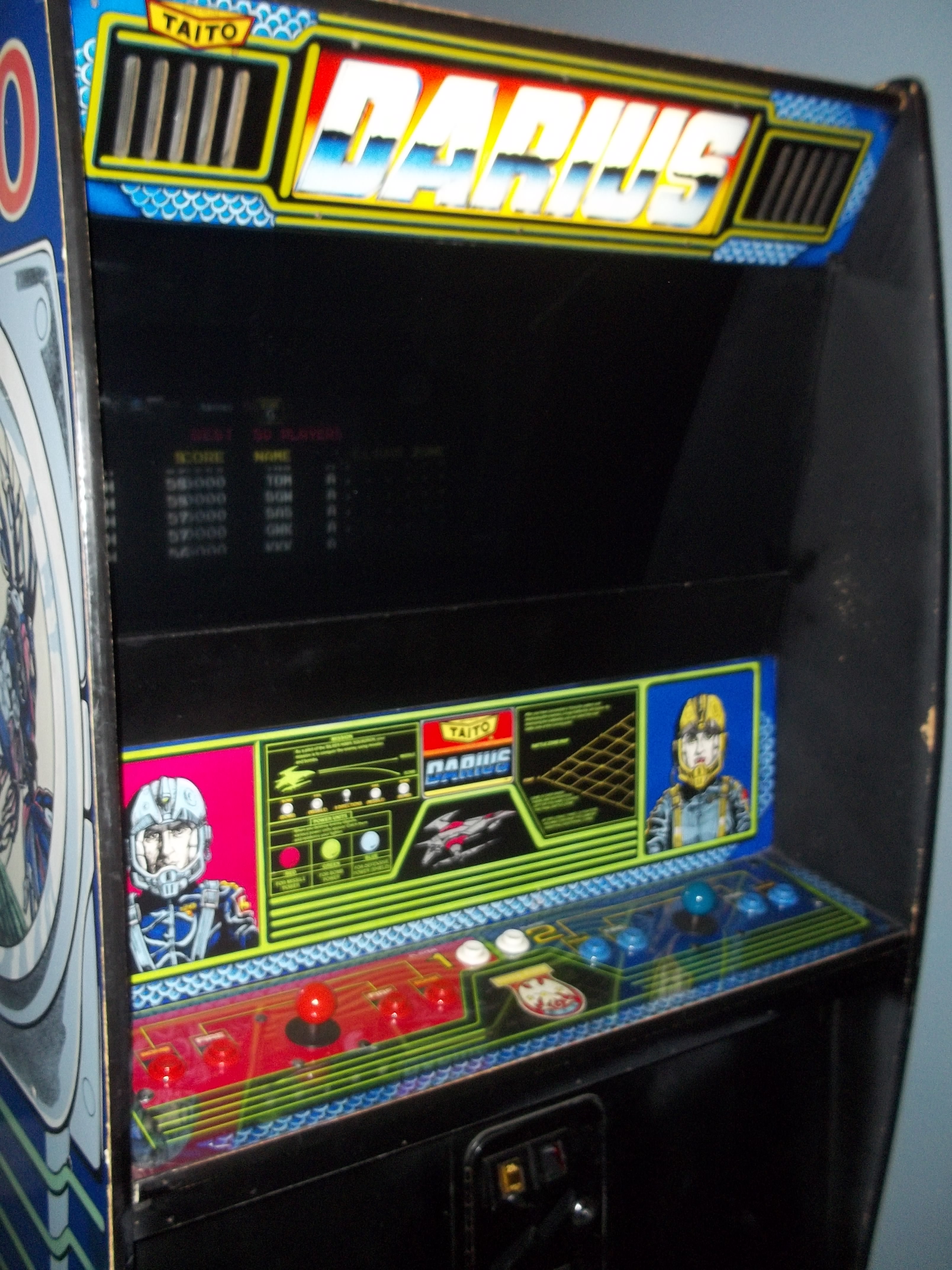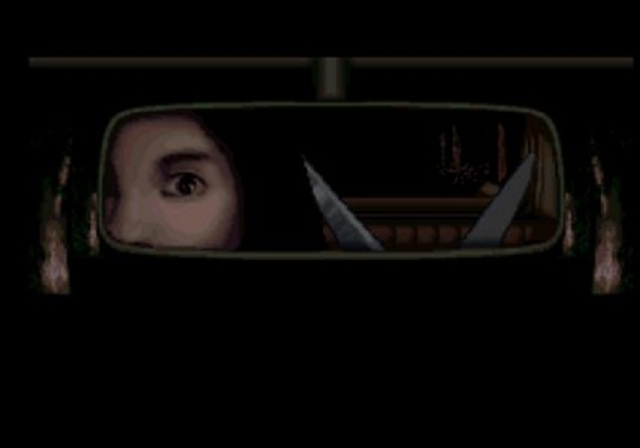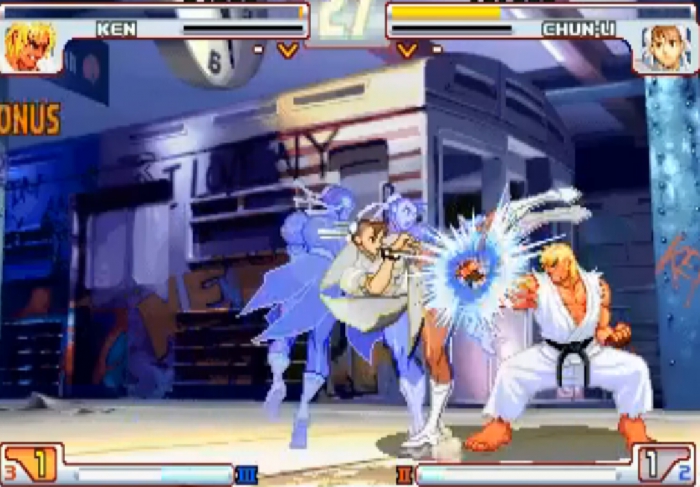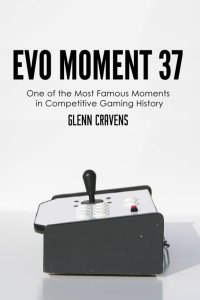I once again attended MAGfest this year, and had a wonderful time presenting panels alongside LordBBH. (Check out the videos of our panels!) My good friends from Brave Wave Productions were also in attendance, and this year they brought Takashi Tateishi as a guest. Tateishi-san has had quite an interesting career: working on one of the most beloved soundtracks ever in Megaman 2, lending his composition skills to cult favorites at Takeru, and doing a whole mess of sound work at Konami in the late 90s. I’m extremely happy to have had the chance to sit down and chat with him about his career. Read on for some interesting anecdotes about early game music development… and also learn about the rarest official Megaman music release of all time.
capcom
The Amazing, Unrecognized World of Japanese Arcade Quiz Games
Quiz games. They’re one of the most basic forms of game out there, going a long, long way back to the days of game shows on radio and television, persisting to this very day. They’ve also been a part of videogaming from the early days: as soon as ROM chips could feasibly hold a decent amount of text, quiz games started to appear in arcades and on consoles.

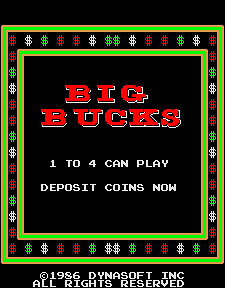
Nowadays, when you think of arcade quiz games, you probably think of something like the multiplayer setups you see at trivia nights in a local bar. This is the direction Western quiz games evolved in: they never really eschewed a game-show/board-game style format, and evolved to implement either real-money gambling mechanics or large-scale multiplayer, competitive functionality.

In Japan, however, things played out very differently. Arcade quiz games started to appear there in the mid-late 80s, through companies like Sega and Nichibutsu. As the 90s came along, a renaissance of quiz-game development created a unique, fascinating genre with an abundance of different thematic elements.


The genre first saw significant advancement through games like Adventure Quiz: Capcom World, a trivia game loaded with 80s Capcom fanservice, and Mitchell’s Quiz Sangokushi, which melded the question-and-answer format with strategic, territory-conquering gameplay. These games utilized elements of visual novels and strategy games to make the quiz experience more appealing and engaging. Other games put quiz elements into fun new genres: Taito’s Quiz Chikyuu Boueigun (“Quiz Earth Defense Force,” no relation to the current Earth Defense Force games by D3 Publisher) has you saving the planet in a story that’s chock-full of classic sci-fi parodies, while SNK’s Quiz Daisousasen (“Quiz Big Criminal Investigation”) is a detective story that morphs into a weird sci-fi/horror thing at the end. You still had game-show style quiz games too, but they were quickly losing ground to more ambitious efforts.


In some cases, publishers adapted existing properties but added a quiz-game twist, hoping the familiar name would draw in customers. This is how we got games like Saurus’s Quiz King of Fighters and Taito’s Quiz HQ, which combined existing game properties with a quiz-game element. As time passed, however, more and more experimentation happened. The mid-late 90s were really a golden age for arcade quiz games, resulting in a stunning variety of thematic and gameplay genres mixing in with traditional quiz elements.

Interestingly, quiz games tend to be very lengthy, sometimes taking an hour or more to complete from start to finish… which, in theory, goes against the short, focused play experiences arcades want to offer. You want to get people off that machine as quickly as possible, right? However, with these new thematic ideas, players became more committed to seeing the games through to the end. It doesn’t hurt as much to abandon a gameshow you feel like you’re not doing well in, but when you’re in the middle of a story about saving the universe? Hell yes you’re going to brute-force your way through with yen! Add a second player into the mix and watch earnings double!
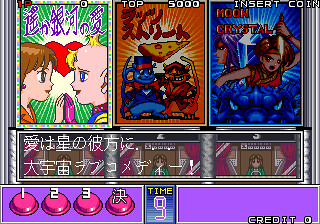
Unfortunately, most the appeal of these games is lost on the West. Japanese quiz games might be the most culturally impenetrable games out there: not only do you have to be fluent in the language, you also have to be fluent in a variety of cultural elements. Sure, you might know the multiple readings of thousands and thousands of kanji, but unless you lived in Japan during the early 1990s and remember which popular talent of the time appeared in a specific ad campaign, you’re probably not going to get very far. That is, unless you cheat. Thankfully, emulating most of these games allows you to cheat through the quiz portions, making the games somewhat more accessible… though it does result in the game losing a big part of its inherent charm. (Plus, even if you do cheat, if you don’t speak the language you can find yourself making very poor choices.)
You don’t hear a lot about quiz games nowadays — the genre saw a sharp decline in development and interest after the 1990s. Currently, the big name (and basically the only name) in Japanese quiz games is Konami’s Harry Potter-inspired Quiz Magic Academy, which has a new arcade version releasing soon (along with a mobile version that is no doubt raking in plenty of money). Right now, it’s practically the only arcade quiz game in town, unless your local game center has an older game installed in a cabinet somewhere.
But where does someone who doesn’t know anything about Japanese arcade quiz games go to get a good sampling of what the genre has to offer? Well, that’s why I’ve taken the time to write this. Today, we’re going to take a look at some noteworthy Japanese-style arcade quiz games: One that, against all odds, got a localized release, and three others that showcase some very interesting experiences. Continue reading
Interview: Kenichi Iwao, Scenario Writer/Planner/Director for Capcom, Square-Enix, DeNA, and Oriflamme
Sometimes, a personality associated with a famous game is so visible and so spoken-about that we ascribe all elements of a game’s creation to them, rather than recognizing the true team efforts that many of these titles are. Such is the case with the original Resident Evil/Biohazard – you’ll often hear Shinji Mikami given full credit for the title, when in truth, Biohazard wouldn’t have taken the industry by storm if it wasn’t for the entire team who made it a revolutionary horror experience. Kenichi Iwao is one such individual: his scenario and storywriting for Biohazard set the stage for two decades of sequels, offshoots, and lore to follow. It’s not his only claim to fame in the business, either: Iwao has worked on many beloved titles like Demon’s Crest, Einhander, and Parasite Eve II. He also carefully created the sprawling worlds and stories of the Final Fantasy XI and XIV MMOs. It’s an honor to have to opportunity to interview one of these great unsung heroes of the game industry.
We had a unique opportunity to sit down with Iwao and discuss his lengthy career in the video game industry, and he surprised us with some of his answers to our questions. What do Steve Jackson and MSX games have to do with Biohazard? Read on to find out!
Special thanks to Alex Aniel of Brave Wave Music for assisting with this interview.
Disturbing Game Overs, part I: A Quarter Can Save a Life
It’s been argued that one of the most interesting things about games is that they allow the person engaging them to feel guilt and responsibility for their actions, something that can’t be done in more passive forms of media. Designers have actually been utilizing this since the early days of the medium as a way to belittle players’ lack of skill (and, hopefully, inspire them to invest more time/money to get better): think of how Missile Command used “THE END” when you lost all cities instead of “GAME OVER.” Guess what, jerk, your failure with the trackball just doomed humanity! Even a small change like that left a big impact on player psyches, and the medium has since evolved, finding plenty of new and exciting ways to make you feel really bad about what you do in games.
But for whatever reason, I’ve always been fascinated by the game over guilt trip. While most games just come to a screeching halt once the lives and health have run dry, others really go the extra mile to make you feel awful about your failure. I’ve spent a great deal of time over the years looking into these , and over the course of my research, I’ve come to the conclusion that there are two types of disturbing game overs:
A. Things are exceptionally grim, and only the power of a continue can stave off this impending doom! You will continue, right? You don’t want this horrible thing to happen, right?
B. YOU DONE FUCKED UP BUDDY, NOW DEAL WITH IT
Both of these are fascinating in their own way, but as a fan of old arcade games, A is particularly interesting. Arcade games are about spending money for play time, and the end goal for the operator is to maximize profits, so keeping play time down (so other folks can spend money for a turn on the machine) is an ideal. Continues might seem opposed to this concept, but they actually play right into it: You’d get more time-for-money-spent value if you started the game over than you would if you credit-fed, as difficulty tends to scale higher the further you get and credits usually last for shorter and shorter stretches of time. It’s why the one-credit clear is such a mark of pride among the biggest arcade: you’ve basically given “the man” trying to squeeze you for money the middle finger with your mad arcade game skillz.
So, in the interests of getting players to continue more, the devs began to put in continue screens that insinuate that a terrible fate awaits if you don’t put that next quarter/yencoin in. Some, like Blue’s Journey/Raguy by ADK, make a heartfelt emotional plea (and then call you names).
Others, meanwhile, place your character – or their loved ones – in more immediate danger. Won’t you spare a quarter to save our heroes from their doom?
Arcade Road Trip: Grinkers Grand Palace (Eagle, Idaho)
I’ve mentioned Game Center CX more than a few times in my writing, and for good reason – it’s a fantastic show that everyone who enjoys older games will appreciate. But while the most popular segment of the program among most fans is the Arino’s Challenge portions, I personally enjoy the “Tama-ge” bits a lot more. In these parts of the show, Arino travels to visit various arcades, large and small, across Japan. It’s a wonderful combination of travelogue and nostalgia, showcasing the (sometimes very odd) places where arcades turn up, the games and atmosphere that make that particular arcade experience interesting, and the people who maintain these game centers. It’s both inspiring and a bit depressing, as the number of mom-and-pop arcades in Japan has been plummeting over the last decade. Oftentimes, it feels like Arino’s travels are an attempt to encourage people to help preserve a dying cultural institution (the segment’s title means “You should visit this game center sometime”).
When I was a teenager, I used to love doing what Arino did during my family’s trips across the country – looking up arcades in the area, visiting them, and seeing what they had to offer. (I was especially devoted to this when Virtua Fighter 3 was really, really hard to find in North America outside certain urban areas – my hunts were often targeted towards finding that particular game.) Nowadays, this is hard to do, because the state of Western arcades is utterly miserable. Most arcades these days – the ones that are still around, anyway – are parts of massive “entertainment centers” that make far more off of redemption games than dedicated video cabinets, and what they do have for games is often old and suffering from disrepair. But there are enthusiasts out there trying to find ways to preserve the more traditional, video-game-focused arcade experience: one of the more popular modern concepts is the “barcade,” a combination of pub/eatery and retrogaming arcade catering to an older clientele.
Generally, most of my experiences with said “barcades”1 have been kinda blah – the alcohol part doesn’t do much for me since I’m one of those irritating teetotalers, and the game selection is generally pretty similar across many of these establishments: Pac-Man and Ms. Pac-Man, Galaga, a bunch of Donkey Kongs, some Space Invaders, probably a Tapper or two to fit the bar theme, Robotron 2064, and a Street Fighter or Mortal Kombat to get some 90s kid cred. These are good and all, but they’re also pretty easy to find. What I’m interested in are titles that you don’t see everyday, particularly Japanese games from the mid-late 80s – stuff that came out after the crash-correction of the Western video game market in the earlier part of the decade and is considerably less common as a result.
I discovered one such arcade on a recent trip. While I spent most of my life in Iowa, my parents retired to the Boise area in Idaho a couple years ago, so I went to visit my parents there over Mother’s Day weekend. My dad suggested stopping by a few arcades while I was there, and one of them was a place called the Grinkers Grand Palace in the Boise suburb of Eagle. It’s nestled into a corner of a strip-shopping center that doesn’t look like the kind of place that would host a bar-arcade. When I stepped inside, however, I knew I had found someplace very special. So today, I’m going to imitate our beloved Kacho Arino and tell you: you should go to Grinkers sometime!
Interview: Hifumi Kono of Nude Maker and Project Scissors/NightCry
Much as I take pride in my knowledge of gaming history, there are a few areas that I could stand to learn more about. One company whose history I don’t particularly know that well – though I’ve always meant to learn more about – was Human, a Japanese developer and publisher prominent through the late 80’s up until the end of the 32-bit era. Human was known for a lot of things: Fire Pro Wrestling (perhaps the best-regarded wrestling game series of its time), a game design school that produced fascinating experimental titles like The Firemen and Septentrion (S.O.S. in the West), the groundbreaking Clock Tower series, and a sudden collapse that left the firm in shambles.
So when I was offered the opportunity to conduct an interview with Hifumi Kono, the former Human employee who went on to found developer Nude Maker, I jumped at the chance. I was eager not only to learn a bit more about Human’s history, but also to look a bit deeper into the game that defined the company’s later legacy, the Clock Tower horror game series, and its spiritual successor Project Scissors/NightCry. Read on for a candid look at Human’s past, Clock Tower’s influence and how it symbiotically benefited from Biohazard, living on pachinko earnings, and what happens when you play a classic Western horror game without speaking the language.
Book review: EVO Moment 37 by Glenn Cravens
There are lots of great publications out there about games and gaming, and yet, there’s not a whole lot of coverage or reviews of said publications in the gaming media. This is incredibly unfortunate, as there are some really great books on games that have been released, both from major book publishers and as small-press efforts. One thing I knew I wanted to do when I conceptualized gaming.moe was to review these books, making more people aware of their existence and letting folks know if they were worth their time and money.
I figured I’d start off with this title, which I obtained from the author himself at this year’s EVO. Seeing as how 2014 marks the tenth anniversary of the “Daigo Parry” – and seeing the fighting game scene become far more internationally interconnected in the past few years – I figured this would be a good title to kick things off with.
EVO Moment 37 by Glenn Cravens
Cover image: John Choi’s MAS stick looking like it hasn’t aged a day
